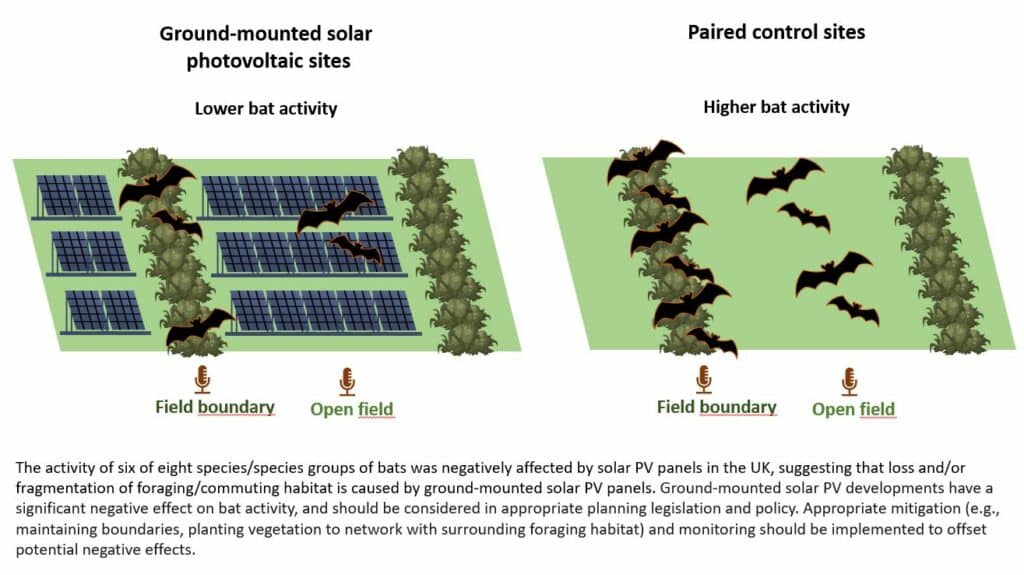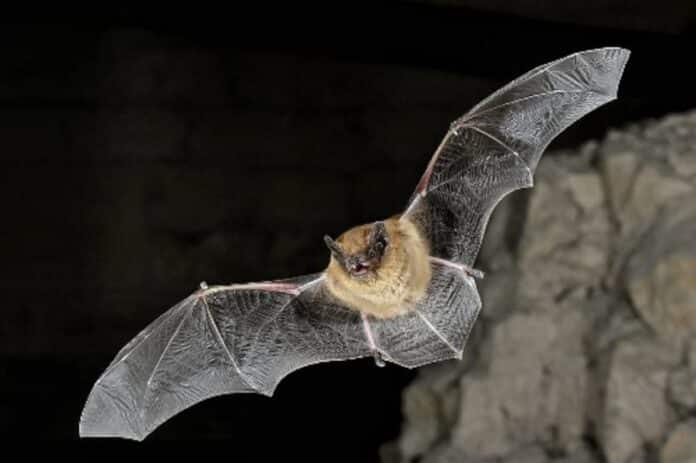Renewable energy is growing fast worldwide, but there needs to be more research on the effects of ground-mounted solar photovoltaic (PV) developments on bats, many species of which are threatened or protected. Renewable technology is now contributing to an estimated 11% of worldwide “total final energy consumption,” with the capacity to meet two-thirds of global energy demand. Europe has the largest share of renewable energy and the fastest rise in its usage internationally.
Renewable technologies play an important role in addressing energy demands sustainably. This is very important given the responsibilities of fossil fuels for producing carbon dioxide, a fundamental driver of climate change. Solar photovoltaic power is the primary renewable energy source globally, accounting for over 30% of the total, with a projected 25% increase by 2021.
Researchers examined the potential to impact and inform planning laws and policy so that the benefits of solar power are reaped without impacting wildlife.
Lead author Lizy Tinsley from the University of Bristol School of Biological Sciences explained: “Renewable energies can have negative impacts on biodiversity, and mitigation is essential to provide win-win solutions for energy suppliers and wildlife.”
The researchers set up bat static monitoring equipment in a solar farm field and a matching area without solar panels (control site) to conduct their investigation. Fields were matched in size, land use, and boundary feature (e.g., hedge, fence, stream), and a bat detector was placed in the middle and edge of both fields for four recording locations, repeated over 19 different sites. Field borders have been selected because these are important navigation features for bats.

The data from the various echolocation sounds at the recording places was then analyzed to determine the bat species and number of bat passes. They discovered that activity levels of Common Pipistrelle, Noctule, Myotis species, Serotine, Soprano pipistrelle, and Long-eared species were much lower in solar farm sites than at matched control sites.
She said, “Due to the significant negative impact identified, solar farm developments should be screened in an Environmental Impact Assessment for ecological impacts so that appropriate mitigation be designed against the impacts, and monitoring is undertaken.”
The researchers suggest that solar farm developments be screened for environmental hazards and that suitable mitigation techniques be developed. This has already been done with wind farms, where bat mortality has been decreased by varying wind speeds and using low-cost auditory deterrents.
It will be essential to identify mitigation strategies that can benefit bats at solar farms, such as planting insect-friendly plants, providing corridors to insect-rich habitats, or providing suitable alternative foraging habitats such as trees.
It is necessary to conduct further research to analyze bat behavior around solar farms and determine why certain species are declining significantly.
Mitigation techniques could include
- growing insect-friendly plants,
- providing corridors to insect-rich habitats, and
- providing suitable alternative foraging sites such as trees.
This discovery has the potential to provide renewable energy without harming animals, which is essential in reaping the benefits of renewable energy for climate change mitigation.
Co-author Professor Gareth Jones said, “This is novel research, as the impacts of solar farms on wildlife are currently little understood, with no evidence regarding their effects on bats, which can provide valuable ecosystem services such as the suppression of pest insect populations.”
The researcher said, “The situation is potentially of concern as solar farms are occupying increasing areas of suitable foraging for bats, and we already know that bats can collide with vertical flat surfaces, mistake flat surfaces for water, and attempt to drink from them. Very little is known on the impacts of solar farms on bats, particularly in the UK.”
The researchers plan to examine variations in invertebrate species richness and abundance between the linked locations.
Journal Reference:
- Elizabeth Tinsley, Gareth Jones, et al. Renewable energies and biodiversity: Impact of ground-mounted solar photovoltaic sites on bat activity. Journal of Applied Ecology. DOI: 10.1111/1365-2664.14474
